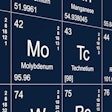VANCOUVER - Researchers from Johns Hopkins University on Monday unveiled a new preclinical hybrid SPECT/MR molecular imaging system at the Society of Nuclear Medicine and Molecular Imaging (SNMMI) annual meeting.
Johns Hopkins has been working with TriFoil Imaging, formerly the preclinical business of Gamma Medica, for the past five years to develop the system, which images mice at a spatial resolution of less than 1 mm.
Lead researcher Benjamin Tsui, PhD, director of the division of medical imaging physics in the department of radiology at Johns Hopkins, said the SPECT/MR device could potentially be used in various preclinical and clinical applications, including cancer, cardiovascular and neurological diseases, thyroid and other endocrine disorders, trauma, inflammation, and infection. The hybrid modality could also reduce patient exposure to ionizing radiation.
The researchers developed and integrated 16 x 16-pixel cadmium zinc telluride (CZT) solid-state PET detectors with a 1.6-mm pixel pitch within the MRI scanner. The SPECT technology converts incoming photons into electrical signals that are not affected by the scanner's static magnetic field.
The SPECT insert also houses a state-of-the-art multipinhole collimator designed to provide both high spatial resolution and the ability to detect photons from small animals injected with available or novel nuclear medicine biomarkers that use radionuclides to convey physiological functions of the body.
Other benefits of the SPECT/MR system include elimination of the radiation dose associated with CT and a lower cost of building the technology compared to PET/MRI, according to Tsui and colleagues.
The technology is not meant to supplant other technologies, but rather to further diversify options for biomedical investigators and clinicians to optimize research and patient care, Tsui added. Human studies with the SPECT/MR system could begin in the near future.




















